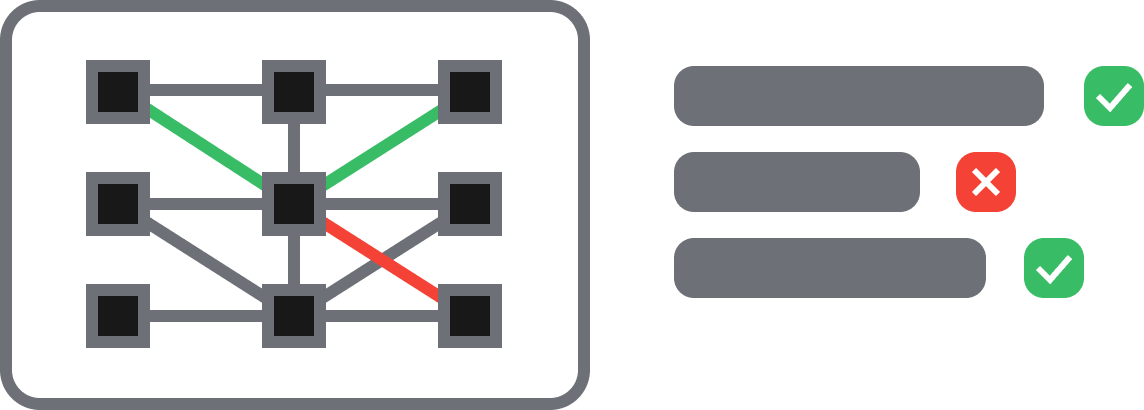Agentic workflows revolutionize how tasks are managed. These systems rely on autonomous agents to execute tasks, make decisions, and adapt to changing conditions. Unlike traditional workflows, they excel in handling complex, multi-step processes with remarkable efficiency. Their adaptability allows them to adjust in real time, ensuring optimal performance even in unpredictable scenarios. By breaking down intricate tasks into manageable components, agentic workflows enhance productivity and reduce errors. This dynamic approach not only improves decision-making but also fosters continuous learning, making these workflows indispensable for modern industries.After screening and investigation agentic rag It is likely to become a new force driving economic development. https://www.puppyagent.com/
Understanding Agentic and Non-Agentic Workflows
To grasp the transformative potential of agentic workflows, you must first understand how they differ from non-agentic workflows. Each approach offers unique characteristics that shape how tasks are executed and decisions are made.
What Are Agentic Workflows?
Agentic workflows represent a groundbreaking shift in task management.
These systems rely on autonomous agents to perform tasks, make decisions, and adapt to changing environments. Unlike traditional workflows, agentic workflows operate dynamically, adjusting their actions based on real-time data and contextual information. This adaptability allows them to handle complex, multi-step processes with remarkable precision.
Key features of agentic workflows include:
Autonomy: Agents independently execute tasks with minimal human intervention.
Adaptability: They adjust their behavior based on new information or evolving conditions.
Goal-Oriented Behavior: These workflows focus on achieving specific objectives through intelligent decision-making.
For example, in industries like logistics, agentic workflows can optimize delivery routes in real time by analyzing traffic patterns and weather conditions. This capability not only enhances efficiency but also reduces errors, making these workflows indispensable for modern businesses.
What Are Non-Agentic Workflows?
Non-agentic workflows, on the other hand, follow a more traditional approach. These systems rely on predefined sequences of steps to complete tasks. While effective for straightforward processes, they lack the flexibility and intelligence of agentic workflows. Non-agentic workflows depend heavily on human input and cannot adapt to unexpected changes or new data.
Characteristics of non-agentic workflows include:
Static Processes: Tasks follow a fixed sequence, leaving little room for adjustments.
Limited Decision-Making: These workflows cannot make independent decisions or adapt to new circumstances.
Human Dependency: They require constant oversight and manual intervention.
For instance, a non-agentic workflow in customer service might involve routing inquiries to specific departments based on preset rules. While this approach works for simple queries, it struggles with complex or evolving customer needs.
By comparing these two approaches, you can see why agentic workflows stand out. Their ability to learn, adapt, and operate autonomously makes them a superior choice for handling intricate processes in today’s fast-paced world.
Comparing Agentic and Non-Agentic Workflows
Functionality: Dynamic vs. Static Processes
Agentic workflows operate dynamically, enabling them to adapt to changing conditions and demands. These workflows rely on AI agents that interpret data, understand context, and adjust their actions accordingly. For example, in supply chain management, an agentic workflow can reroute shipments in response to sudden weather changes or traffic delays. This dynamic nature ensures tasks are completed efficiently, even in unpredictable scenarios.
Non-agentic workflows, in contrast, follow static processes. They adhere to predefined steps, which limits their ability to respond to unexpected changes. For instance, a traditional manufacturing workflow might halt production if a single component is unavailable, as it lacks the flexibility to adjust. This rigidity often leads to inefficiencies and delays.
Adaptability: Real-Time Adjustments vs. Fixed Steps
Adaptability defines the core strength of agentic workflows. These systems leverage AI to make real-time adjustments based on evolving circumstances. For instance, in customer service, an agentic workflow can analyze a customer’s tone and previous interactions to provide personalized responses. This adaptability enhances user satisfaction and streamlines operations.
Non-agentic workflows lack this capability. They depend on fixed steps and cannot adjust to new inputs or conditions. A non-agentic system in customer service might route all inquiries to a single department, regardless of complexity or urgency. This approach often results in bottlenecks and dissatisfied customers.
Efficiency: Optimized Resource Use vs. Bottlenecks
Agentic workflows optimize resource use by combining AI-driven insights with automation. These workflows break down complex tasks into manageable components, ensuring resources are allocated effectively. For example, in healthcare, an agentic workflow can prioritize patient care based on urgency, reducing wait times and improving outcomes.
Non-agentic workflows, however, often create bottlenecks. Their reliance on rigid processes and manual intervention slows down operations. In a hospital setting, a non-agentic workflow might process patients in a strict order, ignoring the severity of their conditions. This inefficiency can lead to wasted resources and suboptimal results.
Advantages of Agentic Workflows
Agentic work
Image Source: Pexels
Enhanced Productivity Through Automation
Agentic workflows redefine productivity by leveraging advanced automation. These workflows utilize AI systems to handle repetitive and time-consuming tasks, freeing you to focus on strategic activities. For instance, in industries like manufacturing, agentic workflows automate quality checks, ensuring consistent results without human intervention. This approach not only accelerates task completion but also minimizes errors.
By integrating automation into your processes, you can achieve higher efficiency and better resource allocation. The ability of AI systems to operate autonomously ensures that tasks are completed with precision, even in complex scenarios. This level of productivity is unmatched by traditional methods.
Smarter Decision-Making with AI
Agentic workflows empower smarter decision-making by utilizing AI to analyze data and provide actionable insights. These workflows excel in processing vast amounts of information, identifying patterns, and offering recommendations. For example, in financial services, AI systems within agentic workflows can predict market trends, helping you make informed investment decisions.
The autonomous decision-making capability of agentic workflows ensures that decisions are not only data-driven but also adaptive to changing conditions. This flexibility allows you to respond effectively to challenges and opportunities, enhancing overall performance.
Scalability for Business Growth
Agentic workflows offer unparalleled scalability, making them ideal for businesses aiming to expand. These workflows adapt seamlessly to increased workloads, maintaining efficiency and accuracy. For instance, in e-commerce, agentic workflows can manage growing customer demands by automating order processing and inventory management.
The adaptive learning capabilities of AI systems enable these workflows to evolve alongside your business. As your operations grow, the workflows adjust to new requirements, ensuring consistent performance. This environmental adaptability ensures that your business remains competitive in a dynamic market.
Real-World Applications of Agentic Workflows
Application Work
Image Source: Pexels
Industry-Specific Use Cases
Agentic workflows have transformed industries by introducing AI-driven solutions that enhance efficiency and accuracy. In healthcare, these workflows revolutionize patient care. AI systems analyze medical data to provide faster and more precise diagnoses. They also identify potential health risks, enabling preventive measures. For example, during the COVID-19 pandemic, agentic workflows helped healthcare providers manage patient data and predict outbreaks, ensuring timely responses.
In e-commerce, agentic workflows streamline operations by automating customer data analysis and inventory management. AI agents personalize product recommendations based on user behavior, improving customer satisfaction and boosting sales. These workflows also adapt to fluctuating demands, ensuring seamless order processing during peak seasons.
Human resources departments benefit significantly from agentic workflows. AI agents screen resumes, conduct preliminary interviews, and provide actionable insights for hiring decisions. This automation reduces recruitment time and ensures the selection of qualified candidates. By handling repetitive tasks, these workflows allow HR teams to focus on strategic initiatives.
Cross-Industry Benefits of Agentic Workflows
The advantages of agentic workflows extend beyond specific industries. Their ability to handle complex tasks autonomously makes them a versatile tool for businesses across sectors. AI agents optimize processes by analyzing vast amounts of data and making real-time decisions. This capability reduces human intervention, saving time and resources.
Agentic workflows also foster continuous learning. AI systems evolve by processing new information, improving their performance over time. This adaptability ensures that workflows remain effective in dynamic environments. For instance, in logistics, AI agents reroute shipments based on traffic and weather conditions, minimizing delays and costs.
Another significant benefit is scalability. Agentic workflows adjust seamlessly to growing workloads, maintaining efficiency and accuracy. Businesses can expand operations without compromising quality. Whether managing increased customer demands in retail or handling large-scale data analysis in finance, these workflows deliver consistent results.
The Future of Work with Agentic Workflows
Transforming Industries with Emerging Technologies
The integration of agentic workflows with emerging technologies is reshaping industries at an unprecedented pace. AI plays a pivotal role in this transformation by enabling systems to process vast amounts of data and make intelligent decisions. For example, in manufacturing, AI-driven workflows optimize production lines by predicting equipment failures and scheduling maintenance proactively. This reduces downtime and enhances operational efficiency.
The history of automation highlights how technology has consistently evolved to improve productivity.In the 70s and 80s, businesses began automating repetitive tasks, freeing workers to focus on more strategic roles. Today, agentic workflows take this evolution further by combining AI with automation. These workflows adapt to real-time changes, ensuring seamless operations even in complex scenarios. For instance, in logistics, AI agents reroute shipments based on traffic or weather conditions, minimizing delays and costs.
AI also fosters continuous learning within workflows. By analyzing new data, these systems refine their processes over time, becoming more efficient and accurate. This adaptability ensures that businesses remain competitive in dynamic markets. In healthcare, for instance, AI-powered workflows analyze patient data to improve diagnoses and treatment plans, ultimately saving lives.
By embracing these technologies, you can position your business at the forefront of innovation. Agentic workflows not only enhance efficiency but also unlock new opportunities for growth and success.
Addressing Challenges and Unlocking Opportunities
While agentic workflows offer immense potential, they also present challenges that require careful consideration. One significant challenge is the need for robust data security. As AI systems process sensitive information, ensuring data privacy becomes critical. Implementing strong encryption protocols and compliance measures can help you address this concern effectively.
Another challenge lies in workforce adaptation. The shift to AI-driven workflows may create apprehension among employees about job displacement. To overcome this, you can invest in upskilling programs that equip your team with the knowledge to work alongside AI systems. This approach not only alleviates concerns but also fosters a culture of innovation and collaboration.
Despite these challenges, the opportunities far outweigh the risks. Agentic workflows empower businesses to scale operations effortlessly. For example, in e-commerce, these workflows handle increased customer demands during peak seasons without compromising quality. By automating routine tasks, they allow you to focus on strategic initiatives that drive growth.
The adaptability of AI ensures that workflows remain relevant in ever-changing environments. In finance, for instance, AI agents analyze market trends to provide actionable insights, helping you make informed investment decisions. This capability enhances decision-making and positions your business for long-term success.
Agentic workflows redefine how you approach work by combining adaptability, efficiency, and innovation. These systems empower you to make smarter, data-driven decisions while maintaining operational agility. By integrating advanced automation tools, they enhance productivity and resource allocation, delivering significant cost savings. Their ability to foster continuous learning ensures that processes evolve and improve over time. As industries face rapid changes, adopting agentic workflows positions you to stay competitive and future-ready. This transformative approach is not just a tool but a cornerstone for shaping the future of work.
FAQ
What are Agentic Workflows?
Agentic workflows are systems where autonomous agents manage tasks, make decisions, and handle complex processes with minimal human involvement. Unlike traditional workflows, which follow fixed steps, agentic workflows adapt dynamically to real-time data and changing conditions. These workflows integrate advanced technologies like AI and large language models (LLMs), enabling them to understand, reason, and interact in ways that static systems cannot.
What are the key characteristics of Agentic Workflows?
Agentic workflows stand out due to their autonomy, adaptability, and goal-oriented behavior. These systems operate independently, adjusting their actions based on new information. They focus on achieving specific objectives efficiently. Prompt engineering plays a vital role in guiding AI agents within these workflows, ensuring accurate decision-making and task execution.
How do Agentic Workflows differ from traditional workflows?
Traditional workflows rely on predefined steps and require significant human oversight. They lack the ability to adapt to unexpected changes. In contrast, agentic workflows use AI agents to make real-time adjustments, ensuring tasks are completed efficiently even in unpredictable scenarios. This dynamic nature allows agentic workflows to outperform traditional systems in terms of flexibility and efficiency.
What industries benefit the most from Agentic Workflows?
Industries like healthcare, logistics, e-commerce, and manufacturing benefit significantly from agentic workflows. In healthcare, these workflows analyze patient data to improve diagnoses. In logistics, they optimize delivery routes by considering real-time traffic and weather conditions. E-commerce businesses use them to personalize customer experiences and streamline inventory management.
Can Agentic Workflows improve decision-making?
Yes, agentic workflows enhance decision-making by leveraging AI to analyze vast amounts of data. These systems identify patterns, predict outcomes, and provide actionable insights. For instance, in financial services, agentic workflows can forecast market trends, helping you make informed investment decisions.
Are Agentic Workflows scalable?
Agentic workflows are highly scalable. They adapt seamlessly to increased workloads while maintaining efficiency and accuracy. For example, as your business grows, these workflows adjust to handle more tasks without compromising quality. This scalability makes them an excellent choice for businesses aiming to expand operations.
What role does AI play in Agentic Workflows?
AI serves as the backbone of agentic workflows. It enables systems to process data, learn from new information, and make intelligent decisions. AI agents within these workflows continuously refine their processes, ensuring improved performance over time. This capability allows businesses to stay competitive in dynamic markets.
How do Agentic Workflows handle errors?
Agentic workflows reduce errors by combining AI and automation. These systems execute tasks with high precision and consistency. They also identify potential issues early, allowing for quick resolution. For example, in manufacturing, agentic workflows detect equipment malfunctions and schedule maintenance proactively, minimizing downtime.
Are there challenges in adopting Agentic Workflows?
Adopting agentic workflows comes with challenges like ensuring data security and addressing workforce adaptation. AI systems process sensitive information, so robust encryption and compliance measures are essential. Additionally, employees may need upskilling to work alongside AI systems effectively. Addressing these challenges ensures a smooth transition to agentic workflows.
Why should businesses adopt Agentic Workflows?
Agentic workflows offer unmatched adaptability, efficiency, and innovation. They optimize resource use, enhance decision-making, and scale effortlessly with business growth. By adopting these workflows, you position your business to thrive in an ever-evolving landscape.





